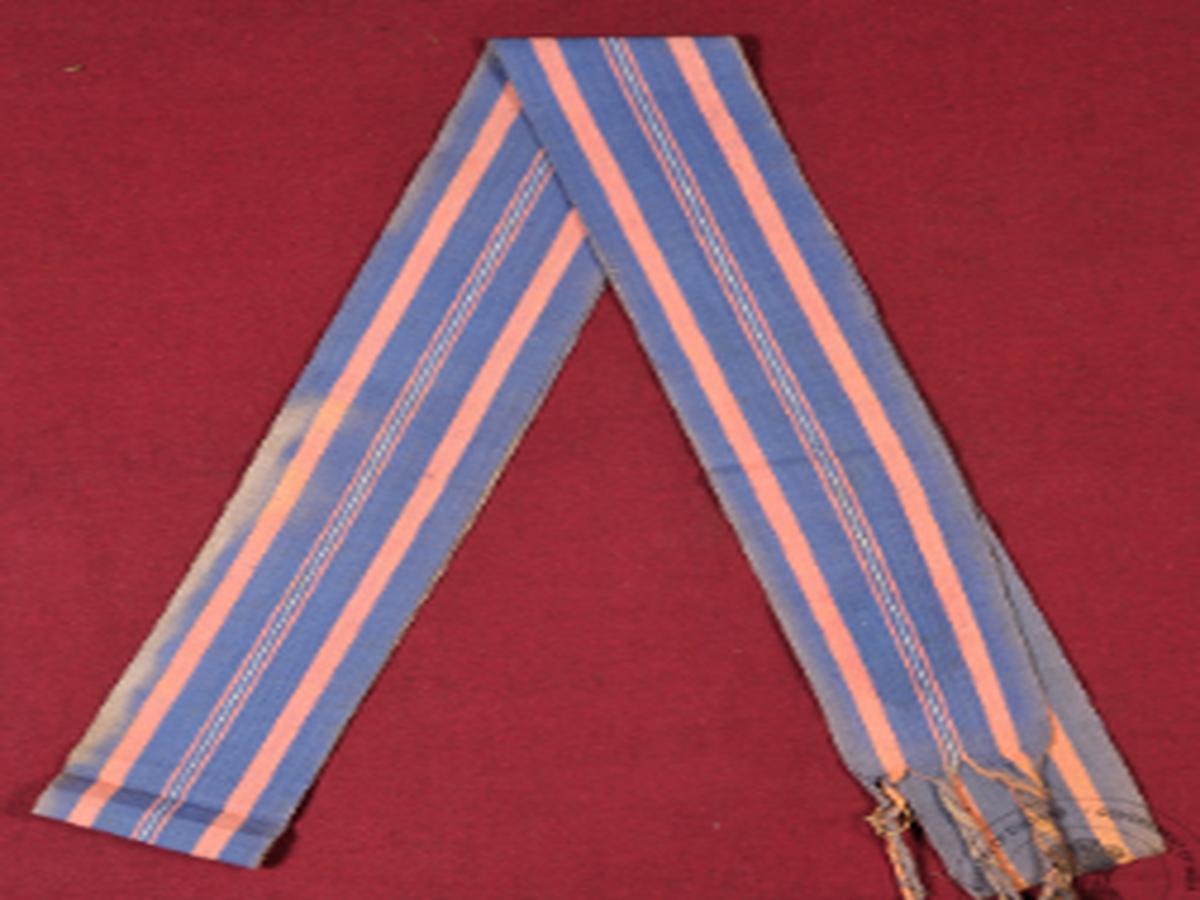State
Tribe Name
Art Type
short description
The Garo tribe of Meghalaya's loin cloth is indeed one of the fascinating traditional attires embodying both practical ways of life and textile heritage of the people. It is a thin-width cotton cloth worn mainly by Garo men in rural areas and during ceremonial occasions, thus forming an important part of traditional male attire. The cloth is long and narrow, handwoven, and tied around the waist by a traditional knot. Deep blue is the color of the cloth, representing peace and protection; the addition of pink stripes enhances the liveliness and cultural personality of the garment. Between the pink stripes, the white thin line stripe contrasts but also beautifies the centerpiece of the design. The design not only speaks for itself but symbolically also depicts the ideas of harmony and continuity in the Garo cosmos.
Thumbnail

Filter Postion
Left
Filter Background
Off
Theme
Filter Header Image

content
Image

description
The Garo tribe of Meghalaya's loin cloth is indeed one of the fascinating traditional attires embodying both practical ways of life and textile heritage of the people. It is a thin-width cotton cloth worn mainly by Garo men in rural areas and during ceremonial occasions, thus forming an important part of traditional male attire. The cloth is long and narrow, handwoven, and tied around the waist by a traditional knot. Deep blue is the color of the cloth, representing peace and protection; the addition of pink stripes enhances the liveliness and cultural personality of the garment. Between the pink stripes, the white thin line stripe contrasts but also beautifies the centerpiece of the design. The design not only speaks for itself but symbolically also depicts the ideas of harmony and continuity in the Garo cosmos.
One end of the cloth may have polished cotton fringes that could remain natural or might be slightly twisted. They serve to create an interesting facet of visual texture to the loincloth while providing a marking feature to signify the end of the fabric within the Garo weaving styles. This loin cloth powerfully articulates an individual's daily life in terms of identity, rank, and cultural spectrum for both mundane and ritualistic purposes. It is often styled together with various other traditional accoutrements for dancing, rituals, and community events.
One end of the cloth may have polished cotton fringes that could remain natural or might be slightly twisted. They serve to create an interesting facet of visual texture to the loincloth while providing a marking feature to signify the end of the fabric within the Garo weaving styles. This loin cloth powerfully articulates an individual's daily life in terms of identity, rank, and cultural spectrum for both mundane and ritualistic purposes. It is often styled together with various other traditional accoutrements for dancing, rituals, and community events.
Image Mode
landscape
promoted
On
Verified
Off
